Abstract
The killing efficiencies due to the decay of incorporated H3-thymidine, H3-uridine, and H3-histidine in E. coli 15T-L- have been determined. Decays from H3-thymidine are 2.0 times as effective in producing lethality as those from H3-uridine and 2.5 times as effective as those from H3-histidine. Therefore, it seems that the greater part of damage from H3-thymidine decays is due to chemical changes associated with nuclear transmutation.
Full text
PDF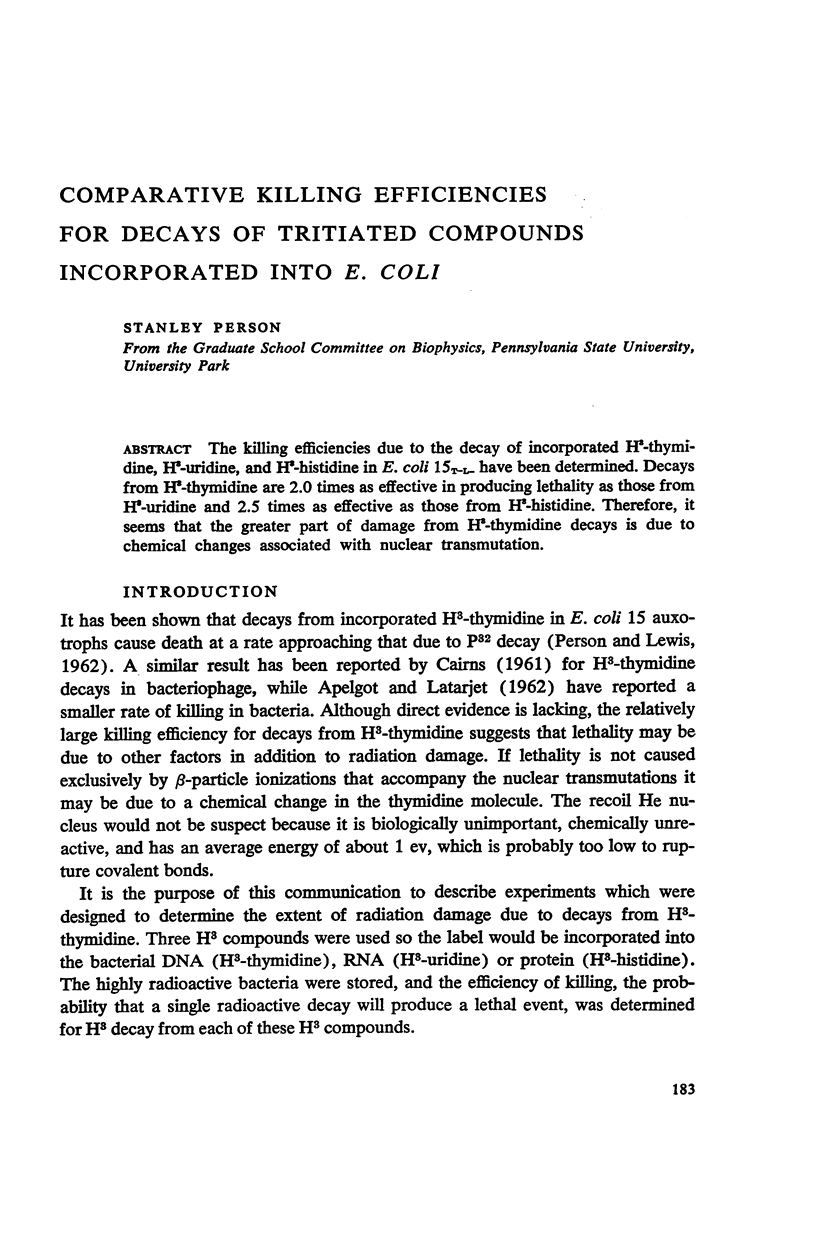
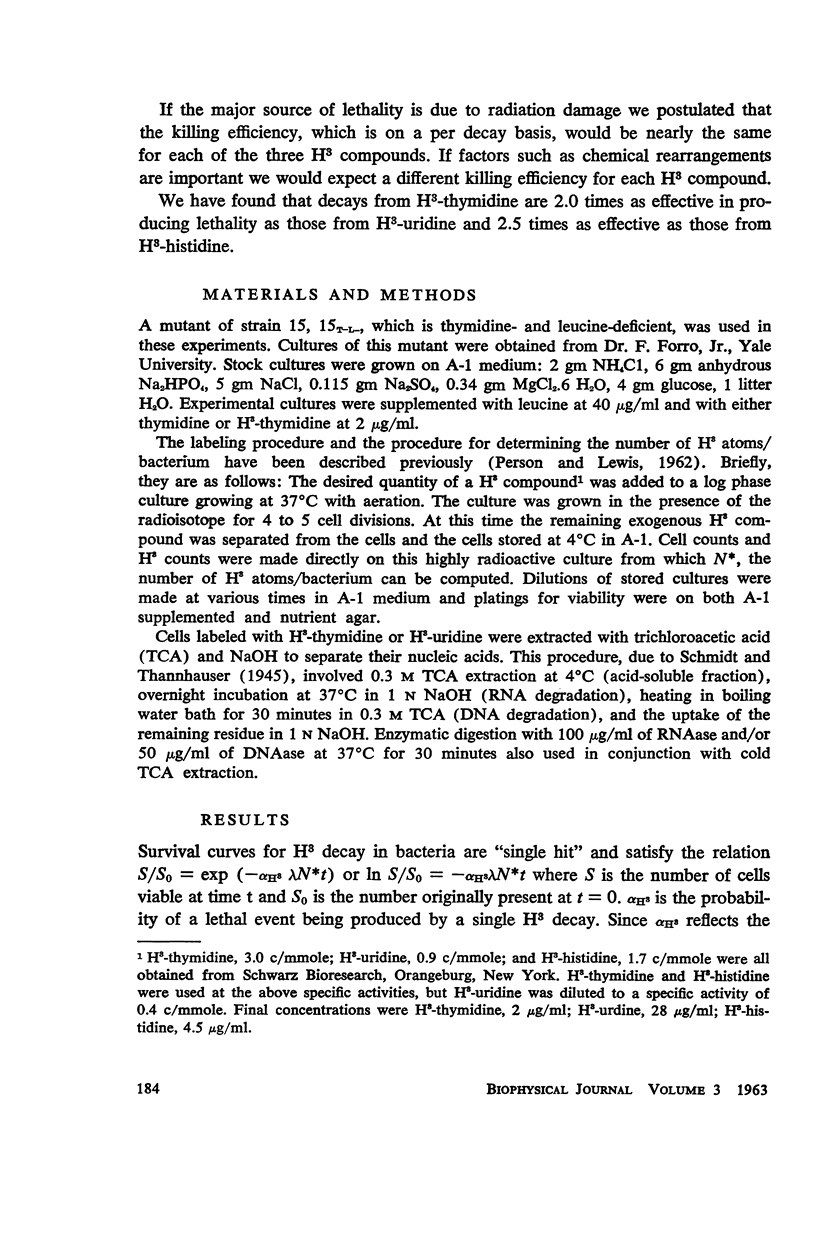
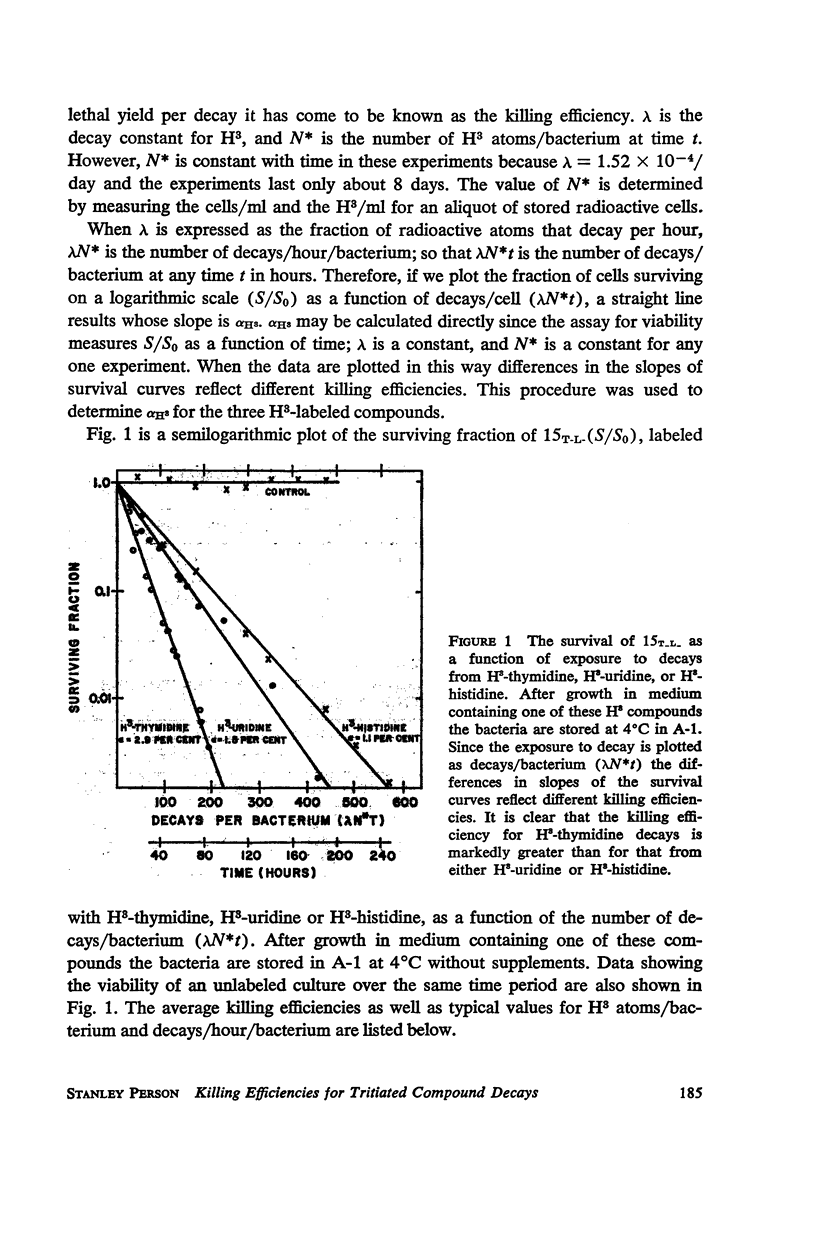
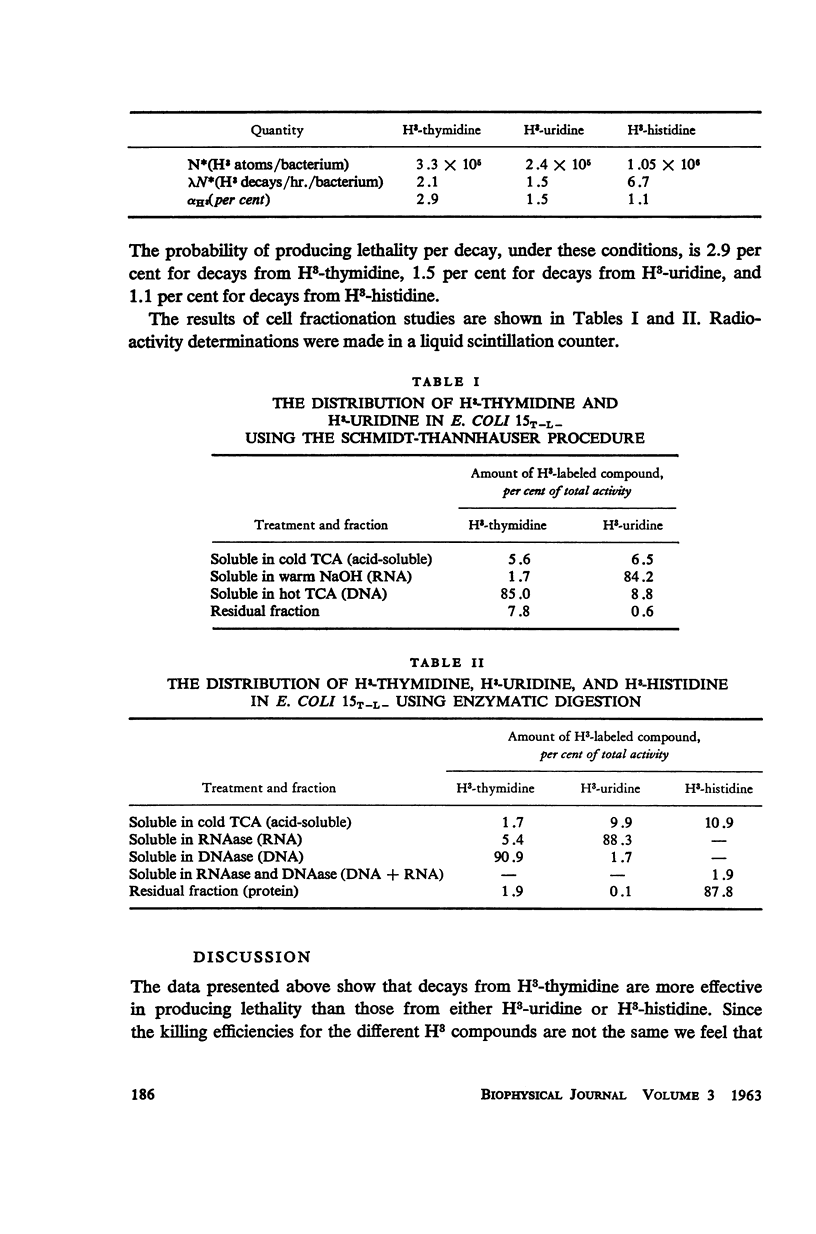
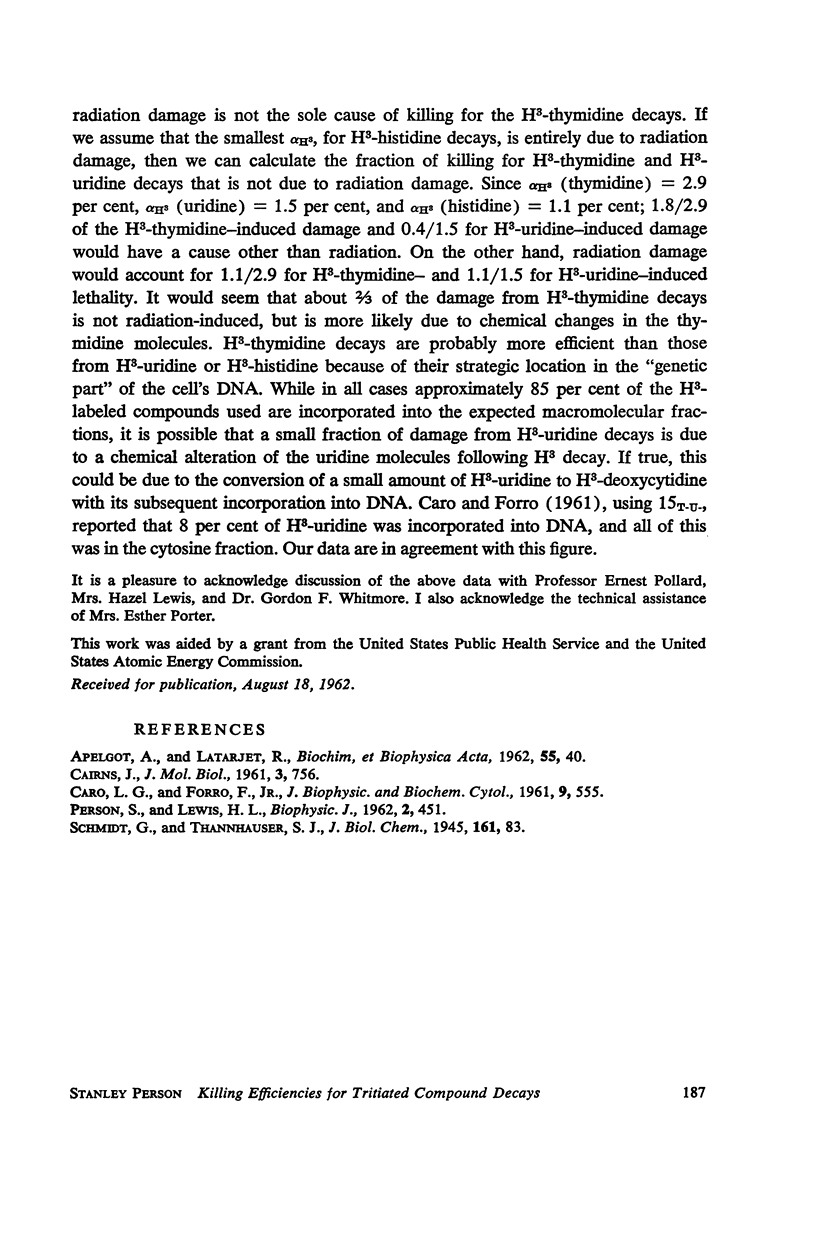
Selected References
These references are in PubMed. This may not be the complete list of references from this article.
- APELGOT S., LATARJET R. [Labelling of a bacterial desoxyribonucleic acid by radiophosphorus, radiocarbon and tritium: comparison of the lethal effects]. Biochim Biophys Acta. 1962 Jan 22;55:40–55. doi: 10.1016/0006-3002(62)90929-0. [DOI] [PubMed] [Google Scholar]
- CAIRNS J. An estimate of the length of the DNA molecule of T2 bacteriophage by autoradiography. J Mol Biol. 1961 Dec;3:756–761. doi: 10.1016/s0022-2836(61)80080-6. [DOI] [PubMed] [Google Scholar]
- CARO L. G., FORRO F., Jr Localization of macromolecules in Escherichia coli. II. RNA and its site of synthesis. J Biophys Biochem Cytol. 1961 Mar;9:555–565. doi: 10.1083/jcb.9.3.555. [DOI] [PMC free article] [PubMed] [Google Scholar]
- Person S., Leah Lewis H. Effects of Decay of Incorporated H-Thymidine on Bacteria. Biophys J. 1962 Nov;2(6):451–463. doi: 10.1016/s0006-3495(62)86867-2. [DOI] [PMC free article] [PubMed] [Google Scholar]


